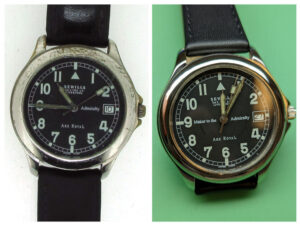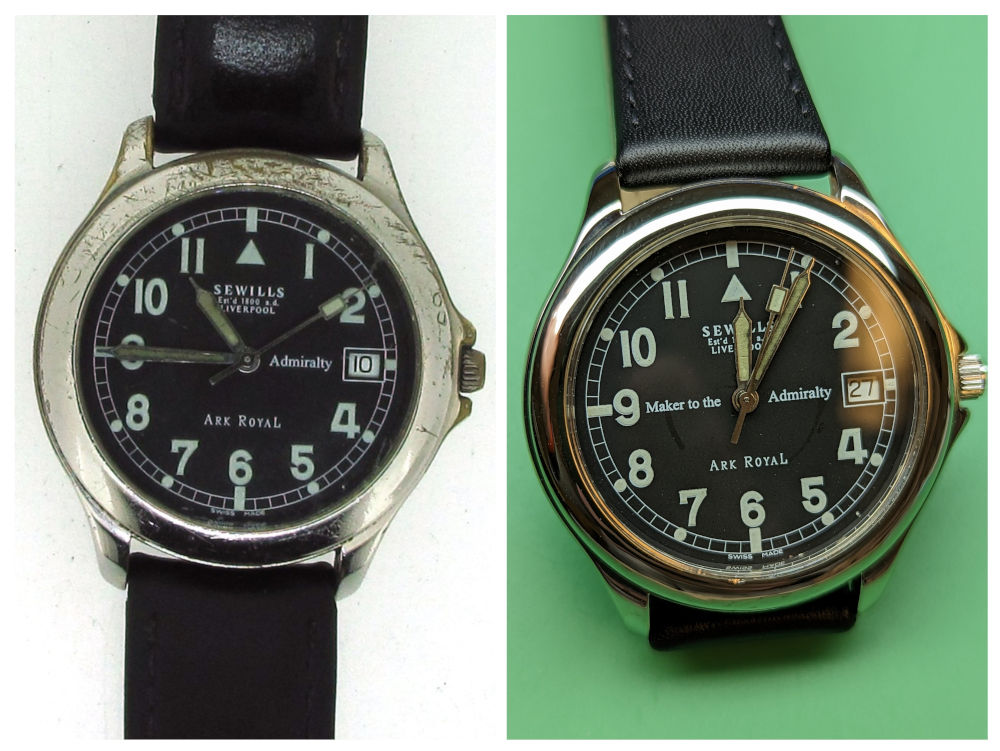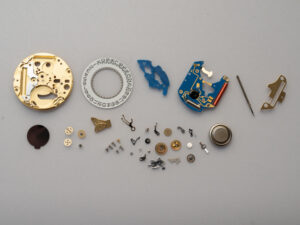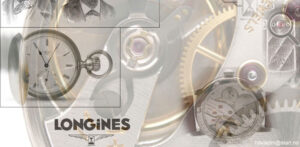A recent job in the workshop involved the refinishing and re-plating of a vintage Sewills watch. We are asked about re-plating watch cases on a fairly regular basis. It’s a job which requires specialist equipment, hazardous chemicals and a good knowledge of the process and pitfalls in order to achieve excellent results.
The first step was to remove the ETA 2824-2 movement from the case. Once the movement is removed we can disassemble the case – so this means removing everything we can, including the glass. This watch has a stainless steel case back, so this does not need plating and it can be refinished/polished in the conventional manner.
Before we can commence plating we need to ensure the case is refinished back to a good standard. Re-plating does not hide any of the existing blemishes, marks and scratches. These all need to be dealt with otherwise the case will look poor after plating is complete. We use a variety of methods to remove the scratches and to ensure we maintain the profile of the case. In some areas we use hand tools and sandpaper, whereas in others we can use a special wheel on our polishing motor.

Once the case has been stripped back to the base metal with the scratches removed, that’s when we are able to polish. For the final high polish finish we use Menzerna M5 compound. This is a personal preference and the case comes up very well. Now we can give the case an ultrasonic and steam clean to remove any traces of polishing compound.
In order to plate the case it must be absolutely free of contaminants. This is crucial to achieve a good result. There are a number of methods to de-grease a case and leave a water break free surface – we opt to use a special preparation compound on the metal in this instance.
Now for the plating itself. There are many methods to plate an item – including tank plating, brush plating and pen plating. All of these methods have their merits and the one to use will depend on the situation. In this instance we use brush plating. To brush plate we connect the watch case to the negatively charged electrode (the cathode) and then use a specialist electroplating brush which is connected as the anode alongside electroplating solution to carefully apply the electroplating. These electroplating solutions can be hazardous, so due care and diligence must be take with protective equipment and ventilation.
After application we thoroughly clean and dry the case before beginning the reassembly process. We refit the case tube, as well as the glass. Once this is done the movement can be re-installed into the case, before the case back is fitted and the watch tested for water resistance. The watch is also checked on our timegrapher to confirm the timekeeping, though in this instance our client wanted just the plating taken care of, so no work was done to the movement itself. Once complete, the results speak for themselves – a huge improvement!
Yours sincerely
David Clark FGA DGA MJVA PJDip. PJGemDip.
Managing Director, JVA Registered Valuer®
W.E. Clark & Son Limited






